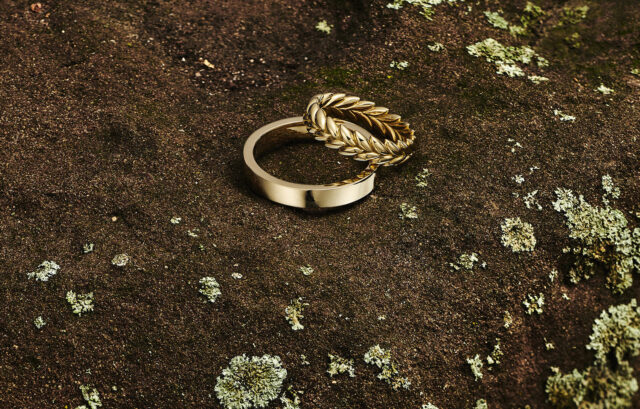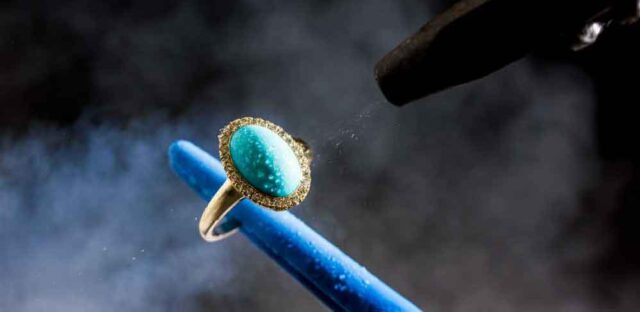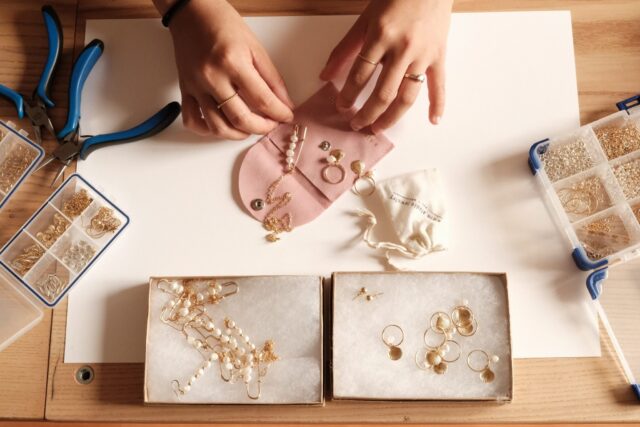
Are you looking to express your style in an ethical fashion? With handmade jewelry, you can help support sustainable fashion while expressing yourself. By joining the ethical fashion movement and investing in artisan-crafted pieces, you can feel proud of the way you look and make a meaningful contribution to the environment.
Introduction to Ethical Fashion
The phenomena of the modern ethical fashion movement have grown in recent years, supporting sustainability and greater responsibility for where clothing and other fashion items come from. You may have heard of related terms such as slow fashion and conscious consumption, but what does ethical fashion actually mean?
To put it simply, it is a form of responsible apparel production that ensures all materials used are from sustainable sources and the manufacturing process is carried out in safe, fair conditions. This allows for the creation of clothing items such as dresses, jeans, and jewelry like handmade bracelets that are not just stylishly appealing but are also ethically created.
Definition of Handmade Jewelry
The labor involved in creating handmade jewelry is often considered to be more sustainable than mass-produced items which are created at a quicker rate on an assembly line. Handcrafting allows artisans to carefully inspect their pieces and provide quality assurance that many mass-produced items cannot attain.
Furthermore, due to their artistry and uniqueness, handmade pieces often have greater longevity than those produced with assembly-line methods without compromising fashion trends or style.

The sustainability offered by custom jewelry also accounts for some economic benefits as well. Artisans may spend significant time working on each piece while they craft a large number at once allowing them to produce cost-effective products without sacrificing quality; thus giving them an advantage relative to industrial producers who use expensive automated machines or special tools for making jewelry en masse.
This cost efficiency may ultimately benefit consumers who want handmade quality items but may not be able to afford similarly made items from bigger businesses.
Ethical Considerations of Handmade Jewelry
Within the ethical fashion movement, handmade jewelry has the capacity to make a huge impact. Handmade accessories produced using sustainable materials and respecting labor conditions can lend beauty and purpose to any outfit while having a minimal environmental impact.
When opting for handmade items, it is important to remember that they come with their own set of ethical considerations. These particular components are often overlooked and deserve recognition:
- Support of independent artisans: When purchasing handcrafted pieces, you support the independent artisans who crafted them. Buying handmade means backing small-scale businesses that often come from marginalized communities, such as women-run collectives in developing nations or refugee craftspeople striving for self-sufficiency
- Material Sourcing: Sustainability is not only a consideration when it comes to the production process of these pieces but also with their material sourcing. Many people opt for recycled materials such as metal or vintage beads; however, one must take into account exactly where these materials originate from and how acquired. Is it ethically sourced? Was it processed in a way that causes minimum harm to living creatures?
- Working Conditions: Many large brand jewelry companies operate unnoticed sweatshops which allow them to produce jewelry quickly and cheaply yet grossly violate international labor standards laws. However, with handcrafted items, this is not the case since they are often made by skillful artisans who consider what is comfortable working conditions within an ethical framework that conforms to safety regulations. Fair wages are essential within any context today, particularly when it comes to our fashion footprint.

The choice of whether or not to employ handmade items can have an incredibly positive effect on both workers’ lives and environmental issues on an exponentially larger scale if done consciously and responsibly; while also conveying our individual aesthetics seamlessly through our outfits.
Upcycling and repurposing in fashion
Upcycling and repurposing in fashion has become a popular trend in recent years as consumers seek more sustainable and eco-friendly options. Upcycling involves taking materials or items that would otherwise be discarded and transforming them into something new, while repurposing involves using an object for a different purpose than it was originally intended.
In the world of fashion, upcycling and repurposing can take many forms. For example, designers may use scraps of fabric to create new garments or turn vintage clothing into modern pieces with updated silhouettes. Some brands even incorporate recycled materials like plastic bottles or old denim into their designs.
One of the benefits of upcycling and repurposing in fashion is that it reduces waste by giving new life to items that might have ended up in landfills. It also promotes creativity and innovation among designers who are challenged to think outside the box when it comes to sourcing materials.
In addition to being environmentally friendly, upcycled and repurposed fashion can also be one-of-a-kind and highly personalized. Consumers who value individuality over mass-produced items can appreciate the uniqueness of these pieces.
Consumer consciousness

In the context of fashion, consumer consciousness means that people are becoming more mindful of the clothing they buy and wear. They are asking questions about where their clothes and jewelry come from, who made them, and how they were produced. Consumers are also looking for alternatives to fast fashion, which is known for producing cheaply made garments with high environmental and social costs.
As a result of this shift in consumer behavior, many fashion brands are starting to prioritize sustainability and ethical practices in their operations. They are using eco-friendly materials like organic cotton or recycled fibers, minimize waste during production processes, and ensure fair labor conditions for workers throughout their supply chains. It has also led to an increased demand for handmade products by artists who use natural or recycled materials.
Consumer consciousness can also influence how people care for their clothes. Rather than simply throwing away items that are no longer wearable or fashionable, consumers may choose to repair or repurpose them instead. This reduces waste and extends the life of each garment.
Conclusion
Overall, by supporting small businesses that create handmade jewelry, the ethical fashion movement can help empower independent artisans and promote sustainable production practices.
By choosing unique, ethically made pieces of jewelry that have a lower environmental impact than traditional manufacturing processes, consumers can feel good about their purchases. Handmade jewelry also stands out more in terms of design and uniqueness.
Ultimately, ethical fashion is a way to make a positive difference while indulging in shopping. It’s a message of responsible consumption that goes beyond fashion – it’s about being part of something bigger.










